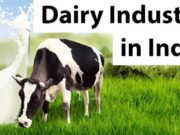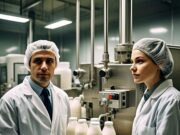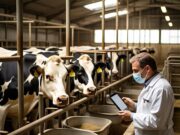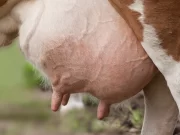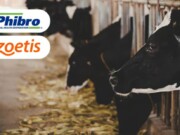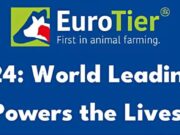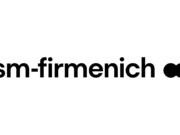
The dairy sector is a business that is dedicated to the collection or processing (or both) of animal milk for human use, typically from cows or buffaloes, but occasionally from goats, sheep, horses, or camels. A dairy is usually found on a dedicated dairy farm or in a sector of a multi-purpose farm (mixed farm) that is dedicated to milk production. India is the world’s largest producer of milk. India ranked first in milk production in the world, accounting for 23% of worldwide milk production followed by the United States of America, China, Pakistan and Brazil. From 146.31 mn tonnes in 2014-15 to 209.96 mn tonnes in 2020-21, milk output in the country has expanded at a compound annual growth rate of roughly 6.2 percent. According to CRISIL, despite COVID-19-induced restrictions, the organised sector is expected to grow at a rate of 5-6 percent in 2021-22, generating Rs 1.5 lakh crore in sectoral revenue.
While a variety of environmental conditions can influence a dairy animal’s immunological status and productivity of milk, heat stress is the most common cause of animal health problems around the world. Heat stress potential is increasing as global temperatures rise, both in absolute terms and in terms of duration. Heat stress is caused by a number of factors, the most important of which are high ambient temperature and high humidity.
Signs of heat Stress:- Common symptoms of heat-stressed animal include,
- Animal moves to shade
- Water intake enhanced while feed intake reduced
- Prefers standing than lying down
- Increased respiration rate, body temperature
- Increased production of saliva
- Open-mouth panting
- Incidences of silent heat increase during heat stress
Reproductive and Productive challenges:- Heat stress challenges the production and reproduction performances of dairy animals. Milk composition, such as milk fat percentage and SNF percentage, is also affected. Follicular development and the estrous cycle are both negatively affected by heat stress.
Strategies to combat the negative effects of heat stress:- There are certain mitigation strategies to alleviate the detrimental effects imposed on dairy animals due to high ambient temperature.

Breeding Management
As cows express lesser heat symptoms during heat stress zones as compared to thermal comfort periods, it is necessary to approve or adopt a good heat detection program to detect cows with marginal heat symptoms. It is always advisable to continue breeding with the help of Artificial Insemination technique instead of using bulls because in natural breeding both bull and cows suffers infertility due to summer stress or heat stress. Genetic selection of heat tolerant animals and inclusion of heat tolerance as a trait in selection programme will be a boon to the dairy farmers.
Animal Housing Management
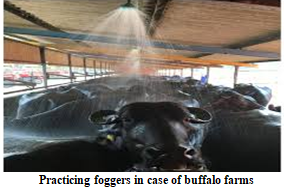
There must be a cooling system in farms/animal houses to combat heat stress. The greatest cooling solution is to use fans in combination with a water sprinkling or water fogging system. This must be exercised in case of buffalo farming as they are more prone to heat stress in comparison to other dairy animals. Excessive sprinkling should never be done because it can result in moist bedding, which can lead to mastitis and other problems in the animals. The farm should be adequately ventilated. The long axis of animal houses must be in east-west direction for provision of a cooler environment inside the shed. The color of roof and outside walls should be painted with white color that cause a reflection of sunlight upto 75 %. Houses should be made up of a thick isolating material that does not give access to the sunlight inside animal houses.
Nutritional Management
Heat-stressed animals are more likely to perform faultily in terms of reproduction and productivity. In heat stress, feed intake decreases. Hence, the demand of energy and nutrient densities increases. High-quality forages and balanced meals will alleviate some of the impacts of heat stress and improve animal performance. The following are some nutritional management suggestions for dealing with heat stress:
- Provide high quality feeds like total mixed rations
- Increase the frequency of feedings
- Feed during cooler times of the day and graze the animals in night time
- Keep feed fresh as much as possible
- Provide high-quality forage
- Decrease fibre content of the diet
- More fat and concentrates should be given to make feed more dense in energy
- Use of by–pass proteins can enhance the milk yield and protein content.
- Animals should be given more minerals (zinc, chromium and selenium) and vitamins A, C, E along with the diets to reduce oxidative stress and enhance their immunity.
- Rumen fermentation modifiers such as monensin and live yeast culture should also be incorporated in animal diets to improve glucose status, nutrient utilization and increase feed intake.
- Intake of sufficient cool water is probably the most important strategy for animals to undertake during heat stress. At least 10% of the herd should be capable of drinking simultaneously from, preferably, large open water troughs that are easily accessible.
Providing natural or artificial surface area
Plantation surrounding the farm will help to reduce the animals’ heat load. However, it is not always feasible in today’s commercial dairy business. As a result, providing artificial shade in the form of a shade cloth or a naturally ventilated structure with open sidewalls can keep the animals away from exposure of direct sunlight up to 30%.
Selection of heat tolerant animals
Genetic Selection of animals based on specific molecular genetic markers (HSP and ATP1B2 gene) for heat tolerance will definitely be a boon to alleviate heat stress in cattle and buffaloes by identifying the heat tolerant animals. It has been proven that animals with shorter hairs, greater diameter and lighter coat are more heat tolerant in comparison to animals with longer hairs and darker color coat. Therefore, selection of such animals will also be fruitful to dairy farmers.

Dr. Gunjan Sharma1, Dr. Divyanshu Singh Tomar2
1B.V.Sc. & A.H., M.V.Sc. (Animal Nutrition), Dr. G.C. Negi College of Veterinary and Animal Sciences, CSK Himachal Pradesh Krishi Vishwavidhyalaya, Palampur, H.P.
Contact: 8827552360
E-mail; nikki.gunjan16@gmail.com
2B.V.Sc & A.H., M.V.Sc (Livestock Production Management), ICAR- National Dairy Research Institute, Karnal, Haryana
E-mail; dstomar26oct@gmail.com
